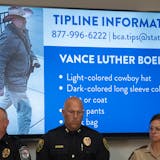When Wells Fargo built its two office towers in Downtown East in 2016, many Twin Cities architects grumbled.
The twin 18-story towers looked like suburban office parks, they said.
Built to house some 5,000 employees, it was widely understood that the office towers wouldn't have the panache (or the budget) of the 50-story Wells Fargo Center on S. 7th Street, which had been designed by starchitect Cesar Pelli. Still, some griped that the office towers should have been embellished with richer materials, like Kasota limestone.
At first, I could see their point. The in-house architectural team of Ryan Cos., the lead developer and designer, could have found something more attractive than precast concrete and metal panels to detail the upper stories.
But, after two years, I've decided that how the Wells Fargo towers look is less important than how they function in the emerging neighborhood. Because the mixed-use towers have formed such a strong connection to the buildings around them, nearby Commons park and the rest of downtown, they've helped Downtown East succeed.
From a purely design perspective, the towers may be underwhelming. But from an urban design perspective, they've helped create a vibrant district and a remarkable addition to downtown.
Here are five reasons why:
1. There's a clear connection to downtown
For decades, the area had been a wasteland of parking lots split off from the downtown core. But the Blue Line LRT broke through with a stop at the old Metrodome. Then, Hargreaves Associates, landscape architects for the Commons, created wider sidewalks connecting the area with City Hall. Today, the office towers, new residential buildings and the renovated Armory feel like a natural extension of downtown.


